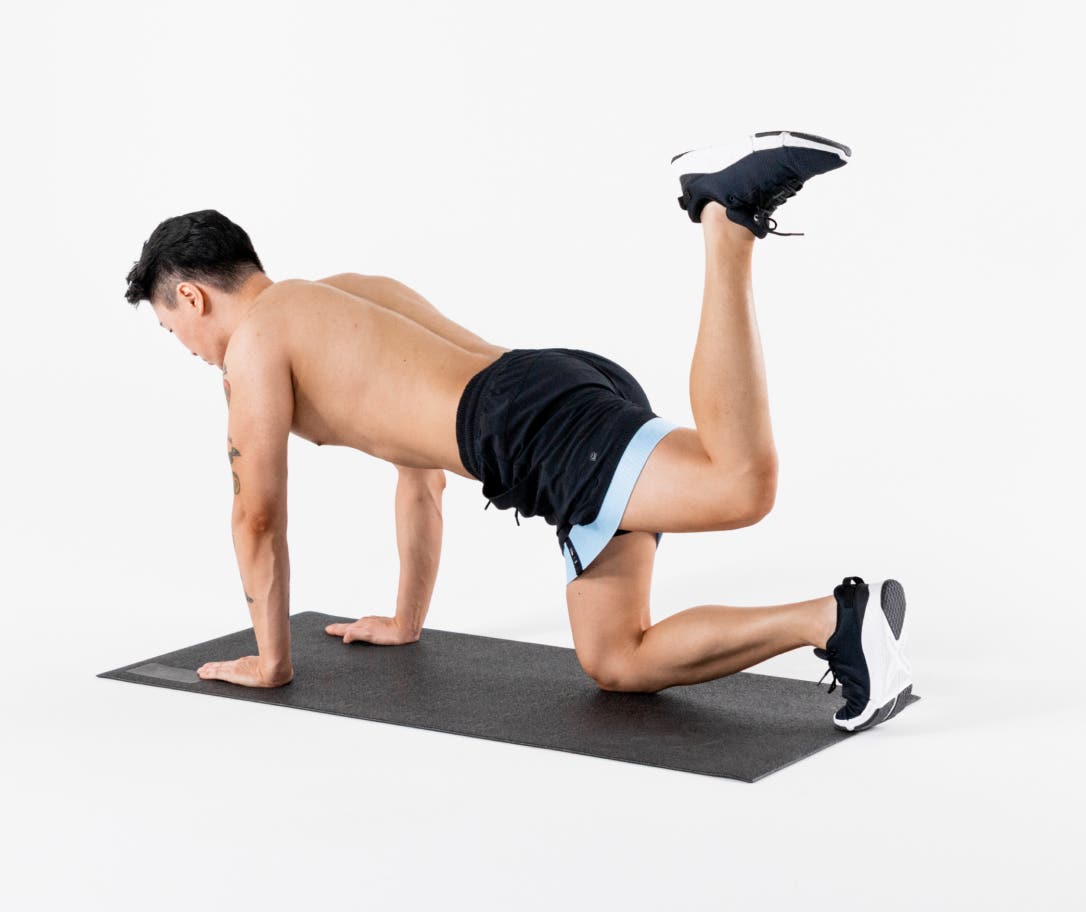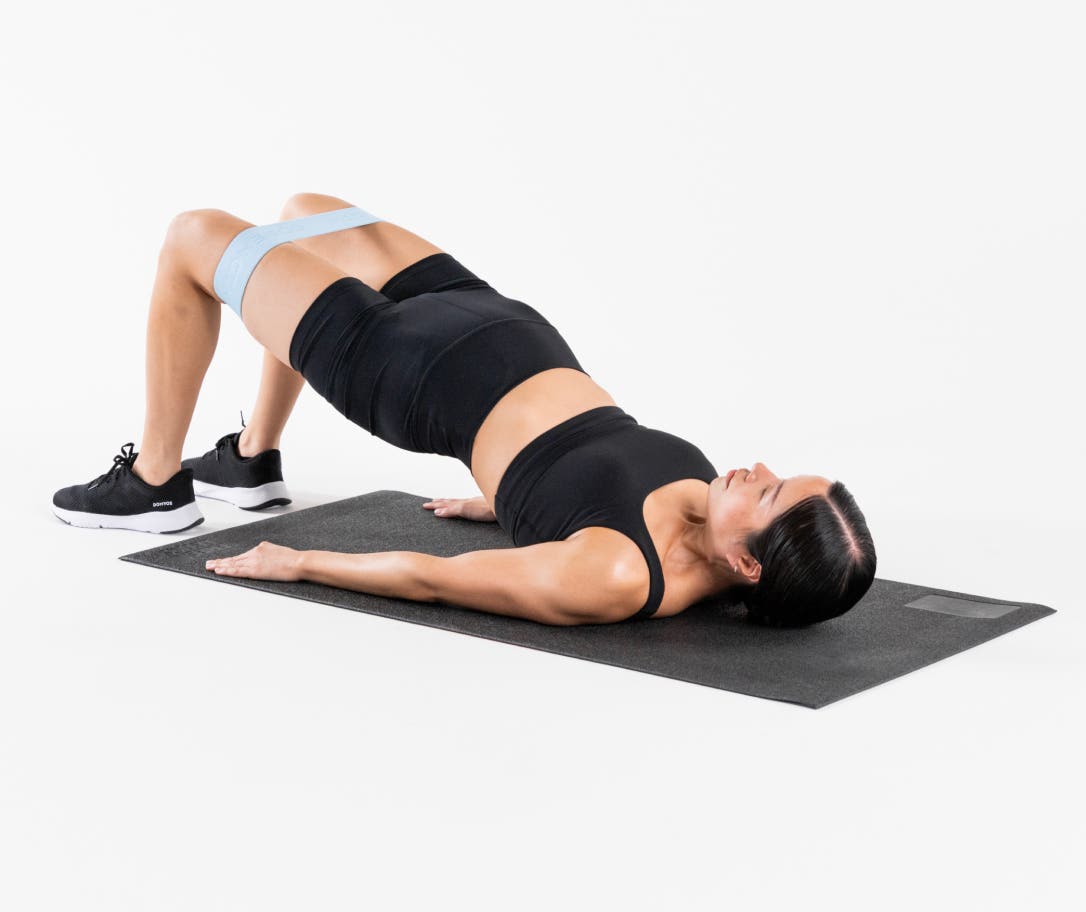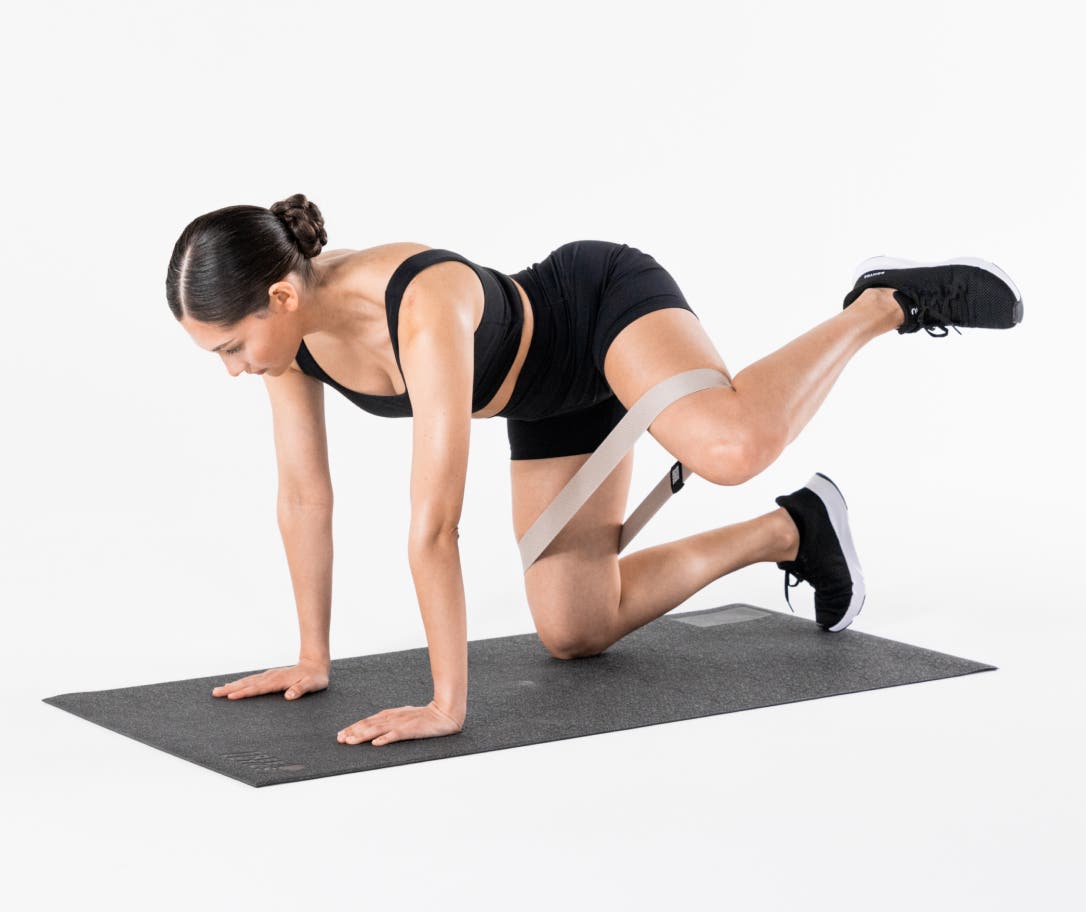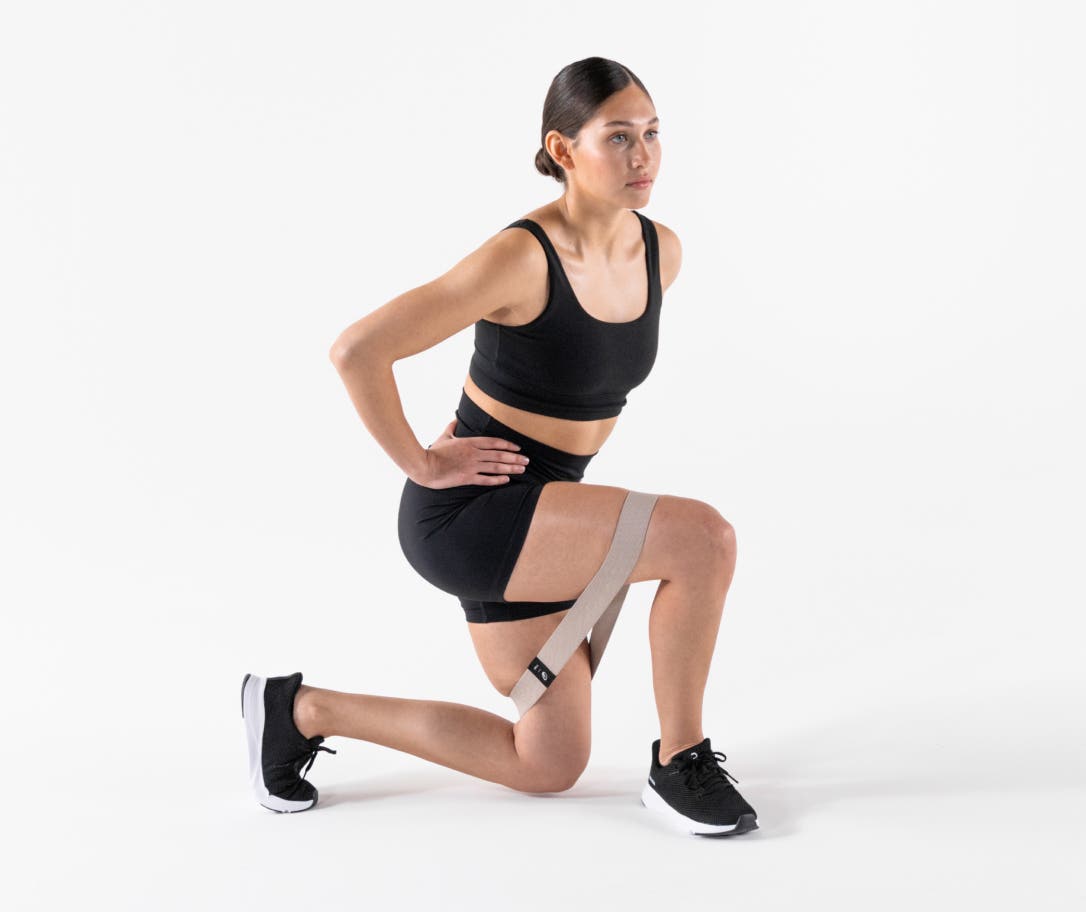Glute bands, also known as hip bands or booty bands, are short resistance loops designed to target the muscles in your hips, glutes, and thighs. Made from thick fabric or latex (or a combination), these bands provide constant resistance during movement, making exercises more challenging and effective.
Typically worn above the knees, around the ankles, or even on the feet, glute bands add resistance without the need for machines, weights, or complex setups, making them perfect for home workouts, gym warmups, or on-the-go training.
How are glute bands different from other resistance bands?
While all resistance bands are designed to challenge the muscles by opposing movement, glute bands differ in a few important ways:
- Size and tension: Glute bands are shorter and thicker than long-loop bands or tube bands. This makes them perfect for exercises with smaller ranges of motion – such as Lateral Shuffles, Hip Raises, and Hip Abductions – that specifically target the hip and glute muscles.
- Placement on the body: Most resistance bands are designed to be held or attached to anchors, whereas glute bands are typically worn around the legs. This positioning engages the hips and thighs in unique ways, helping to activate muscles that can be underused in conventional workouts.
- Stability and control: Because glute bands are often made from non-slip fabric, they tend to stay in place better than rubber bands, which can roll or pinch. This improves comfort and allows for smoother, more controlled movement.

What makes glute bands special?
Glute bands may be small, but their impact is big. Here’s what makes them especially effective:
1. Targeted glute activation
Glute bands help isolate and activate the gluteus medius and minimus – the muscles responsible for hip stabilization and lateral movement. Many people have under-recruited glutes due to prolonged sitting or overdominant quads and hamstrings.1
Using bands in exercises like Bridges, Clamshells, or Lateral Shuffles can improve neuromuscular connection and ensure the glutes are firing properly.
2. Enhanced muscular endurance and stability
Because glute bands add resistance throughout the full range of motion, they help build muscular endurance and improve joint stability.
This is especially beneficial for athletes or individuals recovering from injuries, as strong and stable hips reduce the risk of knee and lower back issues.
3. Versatility and portability
Glute bands are lightweight and easy to carry, making them perfect for home workouts, travel, or gym warmups. You don’t need machines or heavy equipment to fit in your resistance training – just the band and enough space for your workout routine.
4. Progressive resistance
Glute bands come in varying levels of tension (light, medium, heavy), allowing users to progress gradually. They can be used to scale exercises up or down, making them accessible for beginners and challenging for advanced athletes alike.
5. Improves bodyweight movements
Adding a glute band to bodyweight movements like Squats or Lunges increases muscle activation, especially in the hip muscles, like hip flexors and outer thighs. This turns simple exercises into more effective, full-body challenges for building strength.
Our top exercises using glute bands
There are dozens of ways to use glute bands, but here are five of the most effective exercises available in the Freeletics app to build glute strength, improve hip stability, and activate the lower body:

1. Glute Band Bridges
Lie on your back with knees bent, feet flat, and the band just above your knees. Push through your heels to lift your hips while pressing your knees outward against the band and squeezing your glutes. Pause at the top, then lower slowly.
Why it works: This foundational exercise activates the glutes and strengthens the posterior chain. Adding a band increases tension in the outer glutes, improving muscle engagement.

2. Glute Band Fire Hydrants
Start on all fours with the band around your thighs. Keeping your knee bent, lift one leg out to the side until your thigh is parallel to the floor, then return to the start.
Why it works: This movement targets the gluteus medius, essential for hip stability. It's especially beneficial for improving lateral strength and reducing the risk of injury.

3. Glute Band Curtsy Lunges
Stand with your feet hip-width apart and the band around your thighs while maintaining tension in the band. Step one leg diagonally behind the other into a curtsy position, lowering your hips. Push through the front heel to return to the standing position.
Why it works: Curtsy Lunges with a band challenge the glutes and inner thighs while enhancing balance and mobility. The resistance from the band ensures constant engagement.

4. Glute Band Lateral Shuffles
Place the band above your knees or around your ankles. Start with your feet shoulder-width apart and bend your knees to lower into a partial squat. Take controlled steps to the side, maintaining tension in the band.
Why it works: This dynamic exercise strengthens the outer hips and thighs, improves coordination, and boosts lateral movement – a key component in athletic performance.

5. Glute Band Clamshells
Lie on your side with knees bent and the band just above your knees. Keep your feet together and lift the top knee while keeping the hips stacked, then return to the starting position.
Why it works: Clamshells are a favorite for activating small but important hip stabilizers. They’re especially useful for addressing imbalances and improving running mechanics.
Let’s recap
Glute bands are more than a fitness trend – they’re a proven, science-backed tool that boosts lower-body strength by targeting muscle activation and joint stabilization in the lower body.
Whether you're warming up, recovering from injury, or looking to take your glutes to the next level, glute bands can help offer targeted resistance in ways traditional equipment doesn’t. Compact and portable, they’re ideal for anyone looking to level up their fitness, improve hip health, and build stronger glutes.
Sources
[1] Distefano, L. J., Blackburn, J. T., Marshall, S. W., & Padua, D. A. (2009). Gluteal muscle activation during common therapeutic exercises. Journal of Orthopaedic & Sports Physical Therapy, 39(7), 532–540.